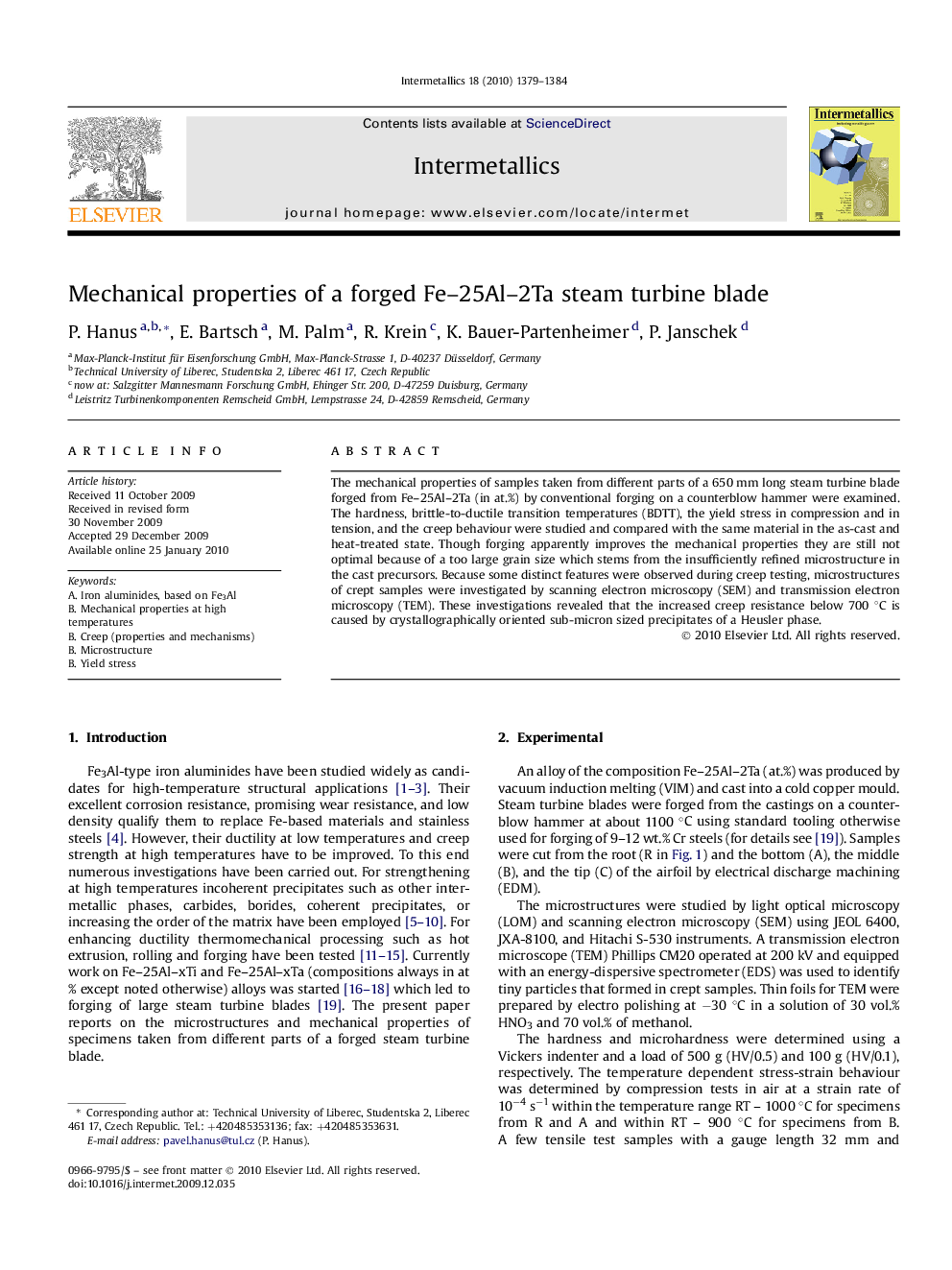| Article ID | Journal | Published Year | Pages | File Type |
|---|---|---|---|---|
| 1601365 | Intermetallics | 2010 | 6 Pages |
The mechanical properties of samples taken from different parts of a 650 mm long steam turbine blade forged from Fe–25Al–2Ta (in at.%) by conventional forging on a counterblow hammer were examined. The hardness, brittle-to-ductile transition temperatures (BDTT), the yield stress in compression and in tension, and the creep behaviour were studied and compared with the same material in the as-cast and heat-treated state. Though forging apparently improves the mechanical properties they are still not optimal because of a too large grain size which stems from the insufficiently refined microstructure in the cast precursors. Because some distinct features were observed during creep testing, microstructures of crept samples were investigated by scanning electron microscopy (SEM) and transmission electron microscopy (TEM). These investigations revealed that the increased creep resistance below 700 °C is caused by crystallographically oriented sub-micron sized precipitates of a Heusler phase.
